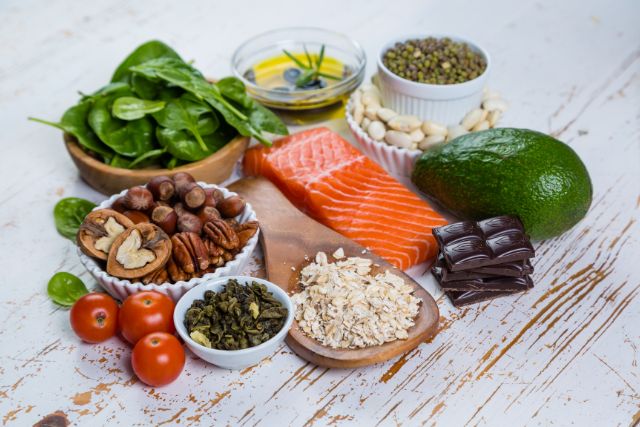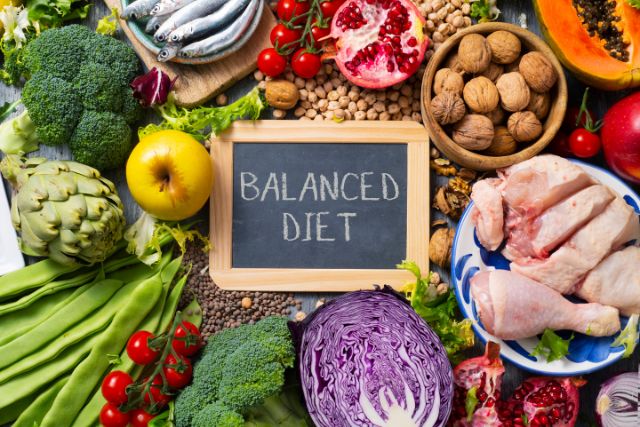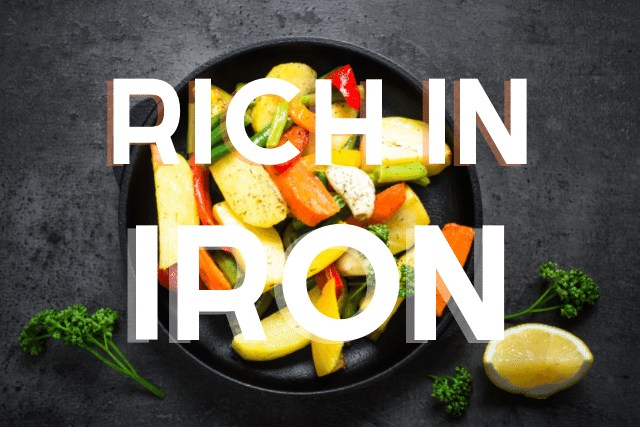Recent Posts
-

- Diabetes-Friendly Nutrition: Smart... 08.12.2024
-

- Nutrition for Chronic... 08.12.2024
-

- Anti-Inflammatory Diet: Food... 08.12.2024
-

- Low-Sodium and Heart-Healthy:... 08.12.2024
-

- Plant-Based Diets for... 08.12.2024
Iron-Rich Vegetables you should Consume

Do you feel like you're receiving enough iron daily? There is a good possibility that the vast majority of us are not.
Iron is essential to the growth and maturation of our bodies. It also has other benefits, including lowering the risk of developing anemia and making your body more resistant to infection. Iron contributes to the maintenance of a wide variety of essential bodily activities, such as maintaining overall energy and concentration, the operations of the gastrointestinal tract, the immune system, and the temperature management of the body. People don't usually become aware of the advantages of iron until they aren't receiving enough of it. Fatigue, heart palpitations, pale complexion, and shortness of breath are some of the symptoms accompanying iron deficiency anemia.
Hemoglobin is a protein essential for the circulation of oxygen throughout the body, and iron is a mineral required for its effective functioning. Additionally, iron is involved in a vast number of other essential activities that take place inside the body.
If you haven't been stuffing your face with iron-rich foods, don't worry; we will show you some vegetables to add to your diet that are rich in Iron.
Spinach is a fantastic way to get your daily dose of iron in any form of preparation. The United States Department of Agriculture (USDA) reports that one cup of this nutritious green, which is first frozen and then cooked, provides 3.72 milligrams of iron and some protein, fiber, calcium, and vitamins A and E.
Significant iron levels may be found in potatoes, most of which are located in the tubers' skins. To be more exact, one big potato that has not been peeled has 3.2 milligrams of iron, equal to 18 percent of the recommended daily intake. It is estimated that sweet potatoes have around 2.1 mg for the same amount, equivalent to 12 percent of the recommended daily intake.
Iron may be found in high concentrations in beans, peas, and lentils. These legumes have a high concentration of protein, fiber, vitamins, minerals, and other plant substances that are helpful to your health and may lower your chance of developing a variety of ailments.
Although broccoli does not have the same high iron content as other vegetables, it nevertheless enters the list since it contains roughly 1 mg of iron per cup and has other beneficial features. Broccoli is an excellent source of many essential nutrients, including vitamin C, vitamin K, and potassium, all of which contribute to maintaining strong bones and skin.
Iron may be found in high concentrations in beans, peas, and lentils. These legumes have a high concentration of protein, fiber, vitamins, minerals, and other plant substances that are helpful to your health and may lower your chance of developing a variety of ailments.
Beet greens share a vibrant appearance with swiss chard and may be prepared and eaten in a manner that is quite similar to that of chard. They have a greater iron content than spinach and are rich in vitamin K, B6, magnesium, and potassium. Additionally, they have very high iron content. In addition to this, they are an excellent source of fiber.
Dandelion greens, similar to the weeds growing in your yard, have a peppery and bitter taste, and they are an excellent source of iron. Because they are a natural antibiotic and a herb, they are wonderful for decreasing bloat after a race or after long travels. They have also been used historically as a herb to maintain good liver function.
Do not, under any circumstances, pluck the ones that are in your yard. You may grow them from organic seeds in your garden, or you can buy them already started at the store.
Alongside the care of qualified medical professionals, spinach is one of the foods that is well recognized for assisting in the battle against anemia. Although dark green leafy foods like collard greens and Kale are a rich source of nonheme iron, the body cannot correctly absorb them without the presence of vitamin C.
There are several varieties of Swiss chard, some of which have veins and stalks that are jewel-toned and multicolored. In addition to this, both the leaves and the stalks of the plant contain a wealth of different vitamins, minerals, and potent plant chemicals.
Swiss chard is an excellent source of magnesium, iron, potassium, and vitamins A, C, and K, while also having a low-calorie count.
Sources:
https://health.clevelandclinic.org/how-to-add-more-iron-to-your-diet/
https://www.medicalnewstoday.com/articles/287228#benefits
https://www.everydayhealth.com/pictures/foods-high-in-iron/
21 Vegetarian Foods That Are Loaded With Iron.
https://www.wellandgood.com/vegetables-with-iron/
https://www.bluezones.com/2018/03/8-greens-youre-probably-not-eating/#:~:text=Dandelion%20greens%20(yes%2C%20like%20the,A%2C%20C%2C%20and%20D.
https://www.pcpforlife.com/4-anemia-busting-foods-that-work-alongside-expert-medical-treatment





